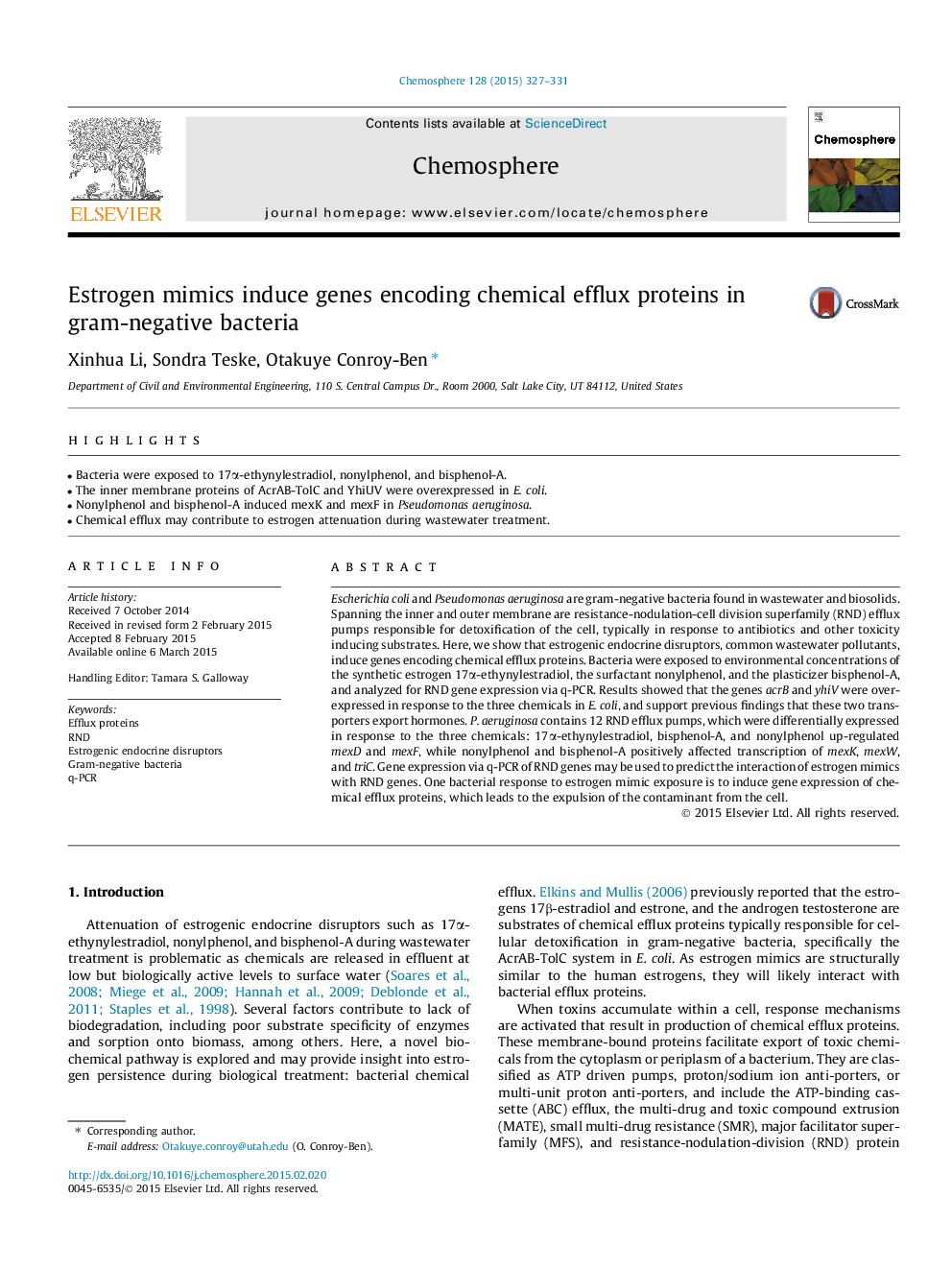| کد مقاله | کد نشریه | سال انتشار | مقاله انگلیسی | نسخه تمام متن |
|---|---|---|---|---|
| 4408507 | 1618843 | 2015 | 5 صفحه PDF | دانلود رایگان |
• Bacteria were exposed to 17α-ethynylestradiol, nonylphenol, and bisphenol-A.
• The inner membrane proteins of AcrAB-TolC and YhiUV were overexpressed in E. coli.
• Nonylphenol and bisphenol-A induced mexK and mexF in Pseudomonas aeruginosa.
• Chemical efflux may contribute to estrogen attenuation during wastewater treatment.
Escherichia coli and Pseudomonas aeruginosa are gram-negative bacteria found in wastewater and biosolids. Spanning the inner and outer membrane are resistance-nodulation-cell division superfamily (RND) efflux pumps responsible for detoxification of the cell, typically in response to antibiotics and other toxicity inducing substrates. Here, we show that estrogenic endocrine disruptors, common wastewater pollutants, induce genes encoding chemical efflux proteins. Bacteria were exposed to environmental concentrations of the synthetic estrogen 17α-ethynylestradiol, the surfactant nonylphenol, and the plasticizer bisphenol-A, and analyzed for RND gene expression via q-PCR. Results showed that the genes acrB and yhiV were over-expressed in response to the three chemicals in E. coli, and support previous findings that these two transporters export hormones. P. aeruginosa contains 12 RND efflux pumps, which were differentially expressed in response to the three chemicals: 17α-ethynylestradiol, bisphenol-A, and nonylphenol up-regulated mexD and mexF, while nonylphenol and bisphenol-A positively affected transcription of mexK, mexW, and triC. Gene expression via q-PCR of RND genes may be used to predict the interaction of estrogen mimics with RND genes. One bacterial response to estrogen mimic exposure is to induce gene expression of chemical efflux proteins, which leads to the expulsion of the contaminant from the cell.
Journal: Chemosphere - Volume 128, June 2015, Pages 327–331
